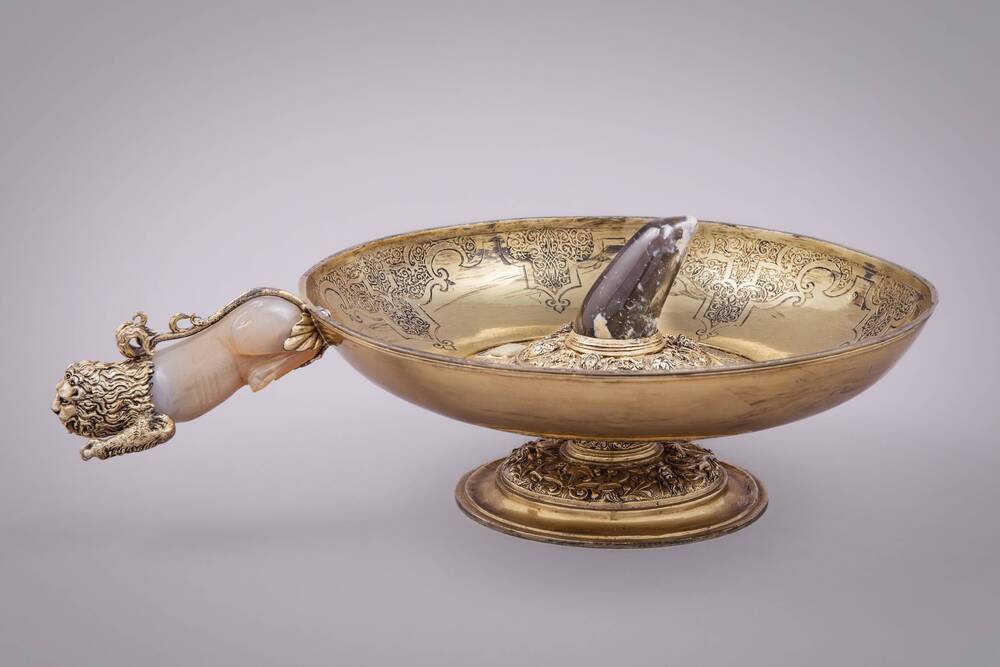A wind-up spider, a rock-crystal ball, a leaping unicorn and a strange-looking jug made out of a coconut. What a weird collection of objects, you may think! Yet they were all displayed by the rulers of Saxony in their famous Kunstkammer. Here, they evoked admiration and wonder along with a Nautilus goblet on an eagle’s claw – and the extraordinary tooth of a male Nar whale, which people thought was the unicorn’s horn. What, you may ask, were the criteria for collecting such diverse objects?
At the royal courts of Germany in the late-sixteenth century, the Kunstkammer supplemented the library. The collection of remarkable things was meant to mirror contemporary knowledge. Some of the objects reflected the creative genius of human beings. Others revealed the caprice of nature. The rarer the item, the more attractive it appeared – be it a whale’s tooth or a wind-up spider.
The Kunstkammer were inspired by similar collections in France and Italy. They were the forerunners of our present-day museums.
The two largest categories showcased were naturalia and artificialia. Naturalia included curiosa, peculiarities of Nature that aroused people’s curiosity: stuffed animals, coral and mother-of-pearl casings, antlers, feathers, minerals, ore and crystals. Artificialia included everything produced by human creativity. Most of those objects had no practical purpose; they were virtuoso works by artists at court, especially made for the Kunstkammer: the work of goldsmiths and stone-cutters, works of art made out of rock crystal or ivory worked on a lathe. But they also included seashells, ostrich eggs and coral. Naturalia were enhanced with elaborate artistry and then incorporated into works-of-art without any practical purpose. An example is the jug made of a Seychelles nut, which was tremendously precious at the time. Finally, there were scientifica. Objects such as scientific instruments, astronomical clocks, globes and mathematical-astronomical instruments – they could all find their way into the Kunstkammer. They were especially well represented in Dresden.
Die Details entdecken
Spider Automaton
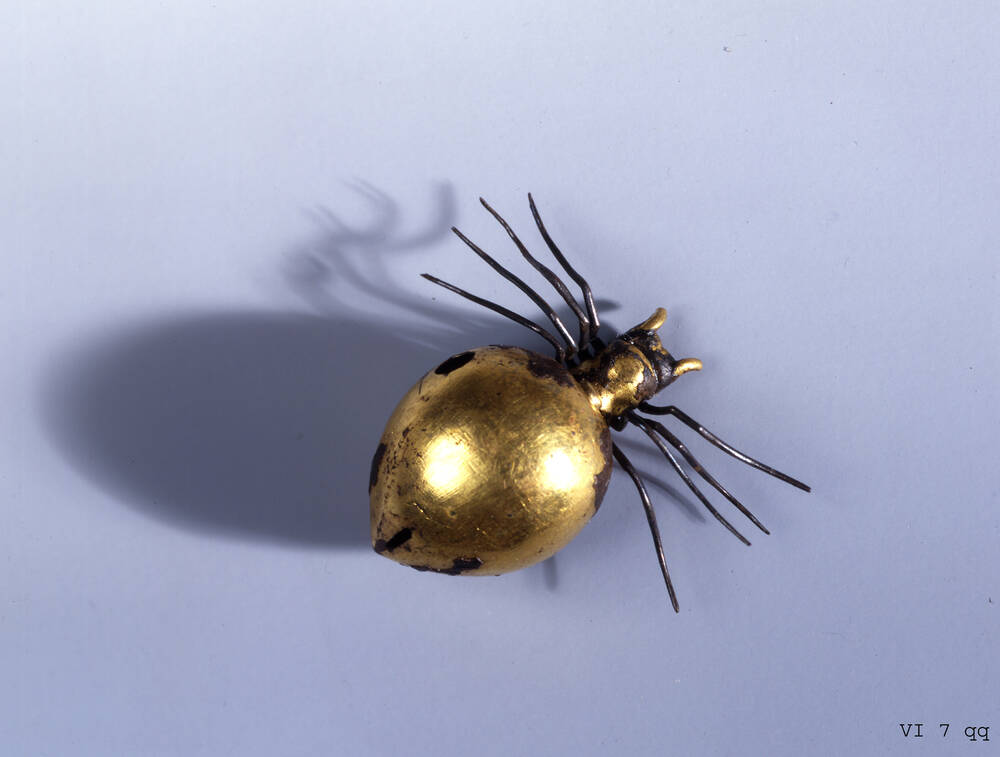
Drinking horn, so-called 'griffin's claw'

Rock Crystal Sphere
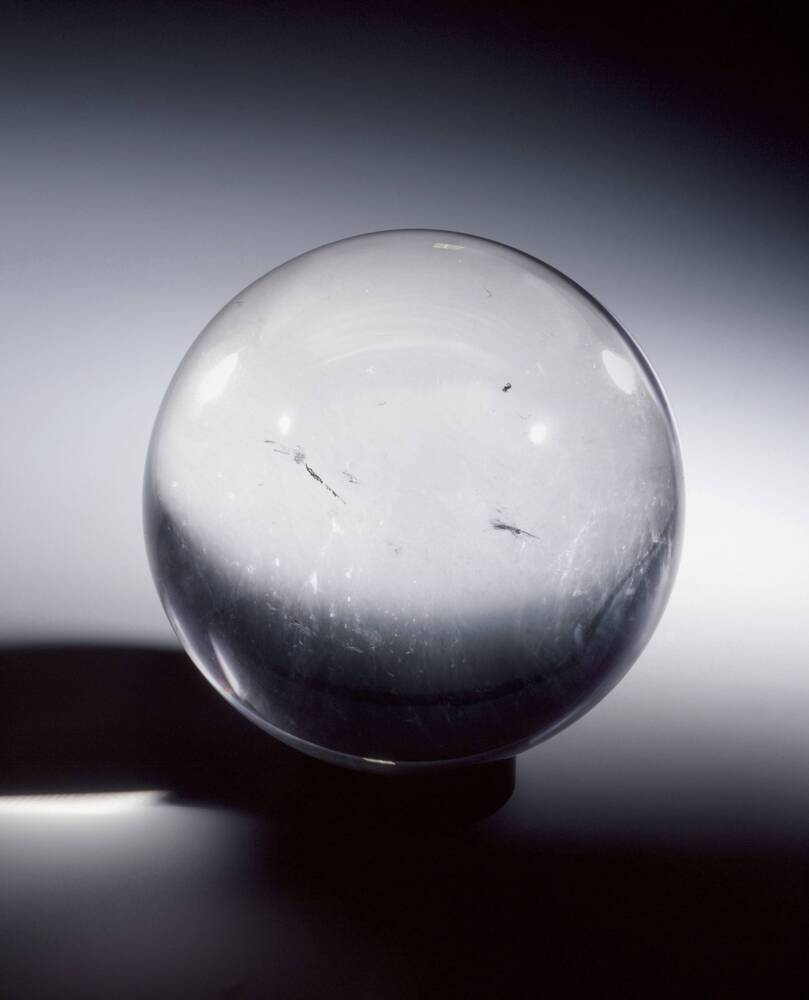
Bezoar in gold filigree setting
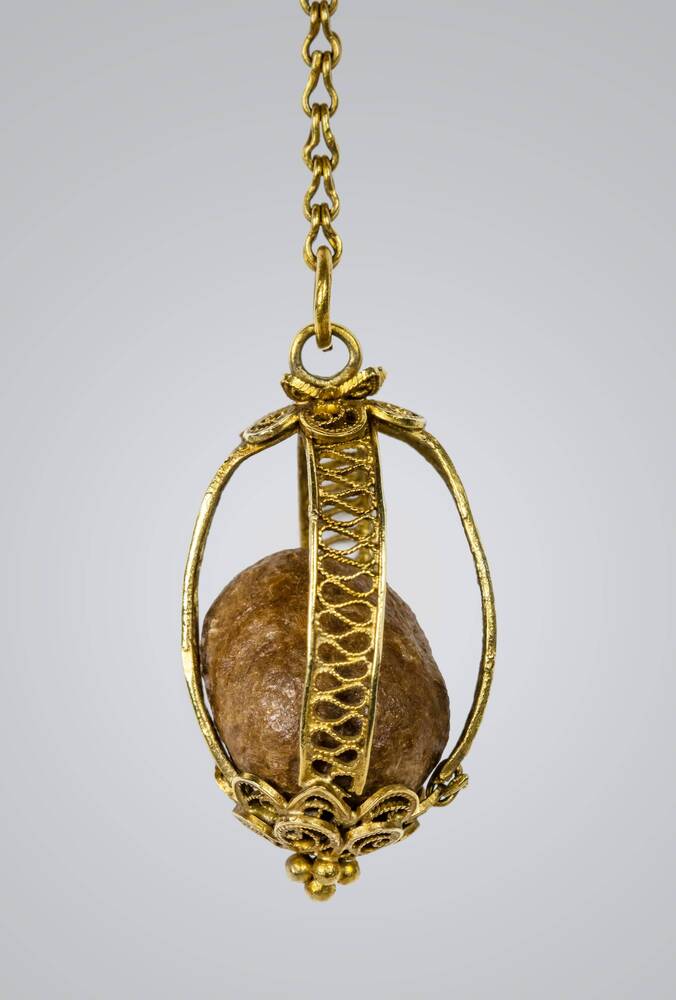
Silver Ore Matrix (so-called handstone) with Christ at the Mount of Olives

Leaping Unicorn
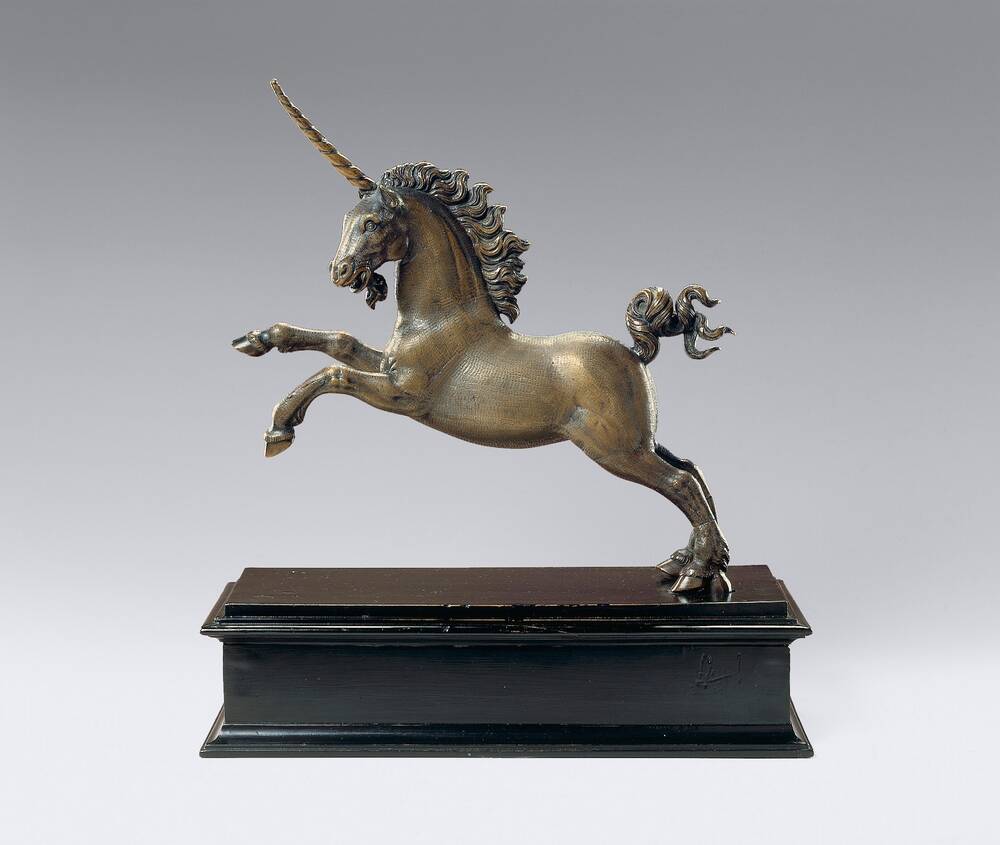
Kunstkammer cabinet
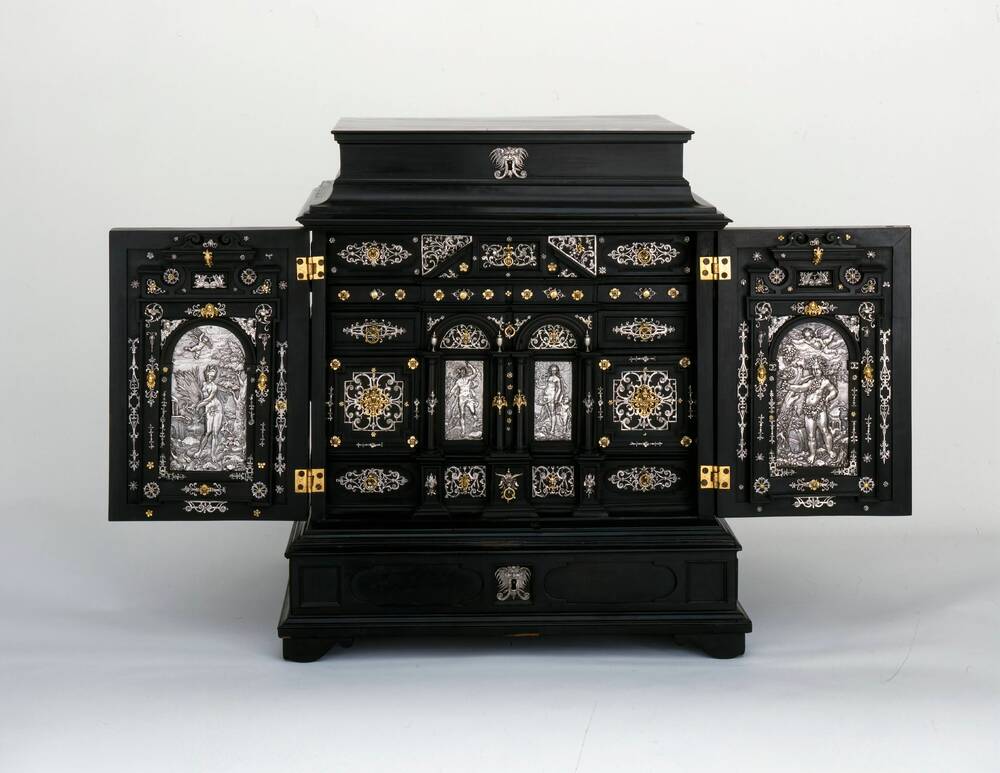
Nautilus cup on an eagle's claw

Ewer made from a Seychelles nut

Mirror frame with cover

Casket with the deeds of Hercules
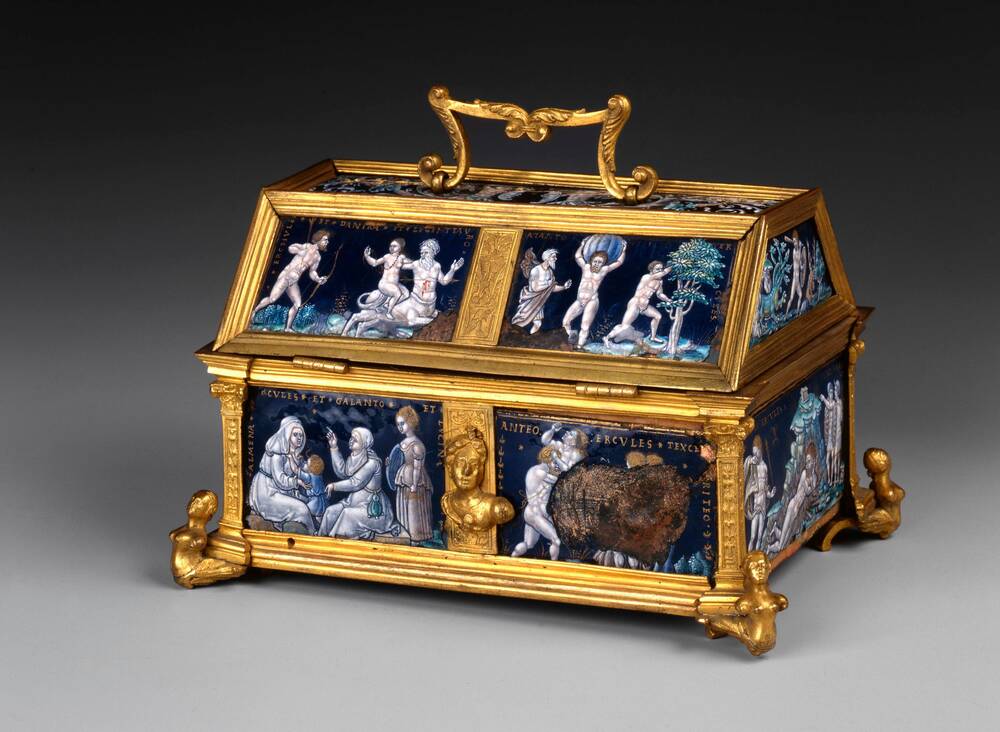
Elector Augustus' ivory goblet, the last piece turned by Elector Augustus himself

bowl with foot known as 'poison tester'
